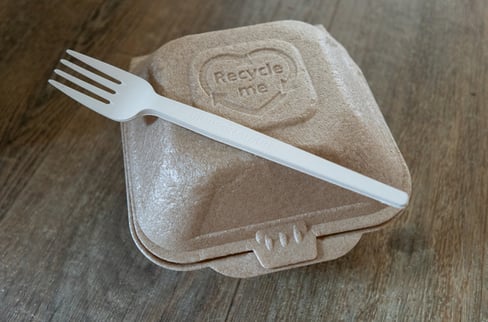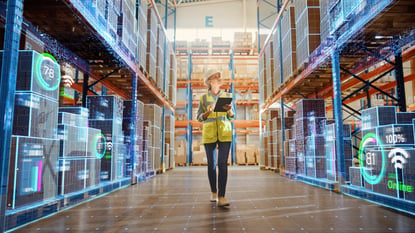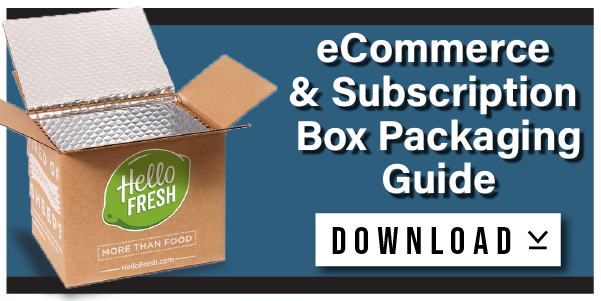
When it comes to staying on top of current trends in the packaging industry, knowledge is power. Protective packaging is an integral part of the shipping process, so staying informed about the current and projected trends in this area is essential. To develop successful protective packaging solutions, businesses need to be able to identify the latest advances in materials, technology, and design.
We previously took a look at packaging trends for 2023, and at that time sustainability and online shopping were likely to maintain traction in the economy. That looks to continue into 2024 and beyond.
Concerning packaging trends in 2024, a key focus will be on sustainable and environmentally friendly practices that reduce waste and minimize environmental impact. Businesses are already making strides towards reducing single-use plastics in their products and packaging materials, while also considering recyclability when selecting raw materials.
Smart packaging with sensors is becoming increasingly popular for allowing customers to track orders in real time. Additionally, many businesses are rethinking their purchasing decisions by investing more in circular economy initiatives like reuse or recycling options.
All these measures should help companies create efficient packaging solutions that balance convenience with eco-friendly practices while considering customer preferences as well. The future of packaging is here now; understanding these shifts will help you become an industry leader and gain a competitive edge.
Ongoing Packaging Industry Trends | Sustainability
The packaging industry is transforming, with sustainability becoming an ever more important factor in the quality of products. Companies are now taking into account the environmental impact of their packaging materials, looking for ways to reduce waste and protect the planet.
This trend towards sustainability has been driven by both public demand and government regulations, as customers and regulatory agencies alike realize the importance of reducing waste and protecting our environment. As a result, companies are increasingly seeking out packaging materials that are more sustainable to meet consumer expectations and comply with regulations.
Gaining Ground
Just as the mail delivery industry has seen significant changes over decades of serving clients and customers, new opportunities arise regularly for the packaging industry to refine processes and improve efficiency.
Three areas that are currently getting attention that relate to the packaging industry are:
- Artificial Intelligence (AI)
- Plastic regulations to reduce reliance, particularly on single-use plastics
- Packaging with sensors
AI
Artificial Intelligence is starting to play an increasingly important role in the packaging industry. Companies are now using AI-powered solutions to help them design sustainable packaging materials, as well as automate some of the production processes. By leveraging the power of AI, companies can speed up their manufacturing process and reduce costs while still maintaining high standards of sustainability.
Some of the areas AI is currently influencing in the packaging industry include:
- Labeling accuracy and efficiency: The labeling process is completed faster, with fewer errors. Likewise, data labeling can be completed correctly at a faster rate and with larger quantities handled.
- Improving the printing process: Speed and accuracy here are also notably increased with the assistance of AI.
- Product design: Not only helping with the creation of new designs, AI has helped refine the size and shape of product packaging to improve the user experience and revenue at the same time.
- Downtime reduction: Machine maintenance and upgrades can be predicted at an optimal time using calculations handled by AI.
Plastic Regulations
Many governments around the world are introducing regulations that require companies to use more sustainable packaging materials.
 In the UK, single-use plastic cutlery and cotton swabs were banned beginning in October 2023. This follows a ban on microbeads and charges and regulations for single-use plastic bags usage. According to a Forbes article, “The ban is a step toward the country's goals to eliminate avoidable plastic waste as part of the 25-Year Environmental Plan.” This means that protective packaging - which is used by some big-name companies so extensively that the amount used in a year can circle the planet more than once (800 times is the estimate) - is on the list of areas to consider.
In the UK, single-use plastic cutlery and cotton swabs were banned beginning in October 2023. This follows a ban on microbeads and charges and regulations for single-use plastic bags usage. According to a Forbes article, “The ban is a step toward the country's goals to eliminate avoidable plastic waste as part of the 25-Year Environmental Plan.” This means that protective packaging - which is used by some big-name companies so extensively that the amount used in a year can circle the planet more than once (800 times is the estimate) - is on the list of areas to consider.
This has forced companies to become more creative and innovative when it comes to designing and producing new and efficient packaging solutions like biodegradable plastics. Some successes so far have been seen in stretch film and bubble wrap.
It also has companies turning to starch-based products, like Green Cell Foam, which is biodegradable and can be easily formed into unique shapes to replace the traditional “peanut” shape. Paperboard and paper are also gaining attention again, due to the flexibility of production processes and the increase of recyclable materials in current production methods.
Currently, the US is slower to address pollution and plastic usage. At the state level, plastic bag bans have been implemented. Illinois, for example, has a Senate Bill currently under consideration to ban both plastic and paper bags. Resistance to the bill is not coming from grocery stores, which stand to save money if the ban is passed, but from consumers who would prefer to keep one or the other of the two bagging options.
In Chicago, Ill, a 7-cent bag tax has been in effect since 2017. However, rather than deterring plastic bag use, the tax has simply been adding $6 million in revenue for the city. Activists are calling for renewed efforts to encourage the use of reusable bags.
Packaging with Sensors
Smart sensors are being included in product packaging, increasing the accuracy of product traceability during its journey. These sensors vary from a proposed sticker on the item itself to a small device that is packaged with the product during transit.
This also increases the ability to learn what products are exposed to in terms of temperature and pressure during transit. Food and pharmaceuticals are two product categories that already enlist this technology, but the potential to be used elsewhere means popularity will grow.
Wrapping Up: Current & 2024 Packaging Trends
Packaging technology will continue to evolve for the foreseeable future and the introduction of Artificial Intelligence will make packaging smarter, faster, and more sustainable. Smart sensors are being used to increase product traceability, while reusable materials are becoming increasingly popular to reduce packaging waste.
As these trends continue to develop, companies should be aware of their potential impacts and take steps to ensure that their products are delivered safely and securely. Developing and maintaining sustainable packaging solutions will also be key for businesses to maintain a competitive edge in the marketplace.
Looking for Sustainable Packaging Materials?
CS Packaging staff can help guide your next steps when it comes to sustainability. Consider these other resources:
How to Identify Sustainable Packaging
Are Corrugated Boxes Eco-Friendly?
The Sustainable Packaging Impact on Branding
.png?width=845&height=137&name=Slice%203%20(23).png)
